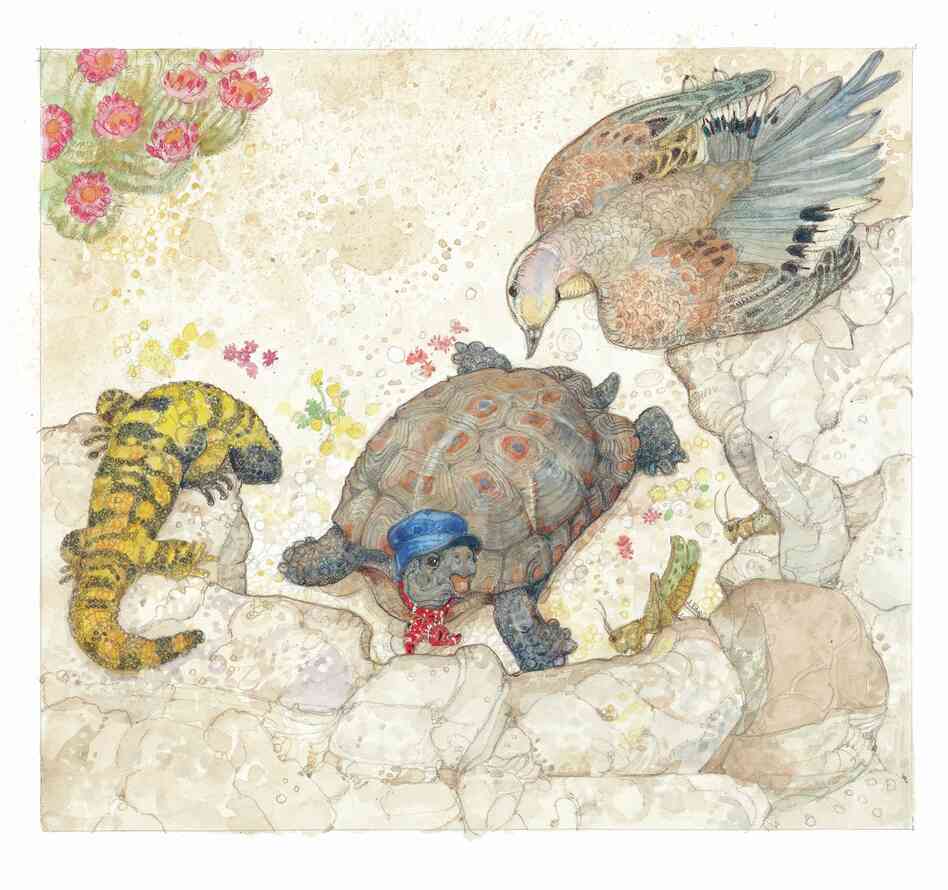Librarypedia: The Future of Libraries and Wikipedia
By on January 25, 2014 Leave a Comment
출처 http://www.thedigitalshift.com/2014/01/discovery/librarypedia-future-libraries-wikipedia/
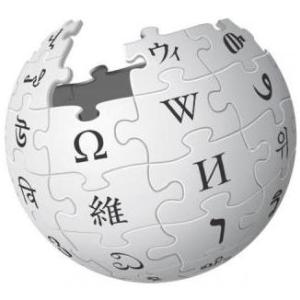 Wikipedia and libraries connect to one another in a circle of research and dissemination. Wikipedia is becoming the starting point for research for many; it can in turn lead readers back to other sources and encourage them to engage in deeper learning within their library.
Wikipedia and libraries connect to one another in a circle of research and dissemination. Wikipedia is becoming the starting point for research for many; it can in turn lead readers back to other sources and encourage them to engage in deeper learning within their library.
While in the past, many librarians have encouraged patrons to eschew Wikipedia in favor of library databases and secondary sources, they are now starting to work together, in recognition of the fact that today’s students often rely on the Internet and Wikipedia for their initial overview. Libraries are working to make sure they are part of the pipeline so that students following the crowdsourced Wikipedia bibliography back to full-text references will find libraries as the end point if not always the starting point.
The Wikipedia Library is an open research hub for improving the world’s largest encyclopedia and connecting readers back to libraries and reliable sources.
It started in 2010, when Credo Reference donated 500 free research accounts to Wikipedia’s most active editors. Four partnerships, followed with donations from HighBeam, Questia, JSTOR, and Cochrane Library—over 4500 accounts individually worth several hundreds of thousands of dollars. In 2013 the Wikimedia Foundation funded a grant to expand the library further, which has been underway for the last nine months, shifting the focus from only managing paywalled donations to a much broader campaign of outreach and integration.
The Wikipedia Library is developing into a portal to connect editors with libraries, open access resources, paywalled databases, digital reference tools, and research experts. It is a place for active Wikipedia editors to gain access to the vital reliable sources that they need to do their work and to be supported in using those resources to improve the encyclopedia. We aim to make access and use of sources free, easy, collaborative and efficient.
The Wikipedia Library is working together towards five big goals that create an open hub for conducting research:
- Connect editors with their local library and freely accessible resources
- Partner to provide free access to paywalled publications, databases, universities, and libraries
- Build relationships among its community of editors, libraries, and librarians
- Facilitate research for Wikipedians, helping editors to find and use sources
- Promote broader open access in publishing and research
TO LEARN MORE OR GET INVOLVED
- Read about the Wikipedia Library’s goals and activities
- Create a profile
- Subscribe to the Wikipedia Library newsletter
- Stop by during ALA Midwinter in Philadelphia onSaturday, January 25th for an information session at the Marriott Hotel from 1:30-3 p.m.
A WIKIPEDIAN ON STAFF AT EVERY UNIVERSITY
Wikipedia Visiting Scholars is a pilot program to help active, engaged Wikipedia editors partner with an established university library to gain access to its research resources.
This winter, the first pilot of the Visiting Scholars program will run at George Mason University’s Roy Rosenzweig Center for History and New Media, led by led by digital humanities guru Amanda French, and at the University of California at Riverside.
Visiting Scholars will gain full and free access to the library’s online catalog in order to improve articles on the Encyclopedia.
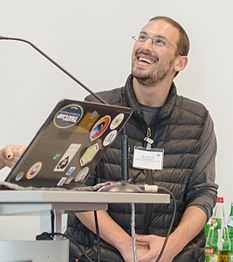
Wikimedia Foundation Grantee Jake Orlowitz is lead coordinator of the Wikipedia Library
The aim is to build and strengthen connections between universities and Wikipedia, and to generate good will between librarians and Wikipedia editors.
Wikipedia Visiting Scholar positions are designed to be remote and unpaid, although a preference for a local/regional Wikipedian could be explored, and paid travel could be arranged on a per-institution basis.
Participating libraries will host a Wikipedia editor and give them full access to library collections for a period of time, ideally six months to one year. Partners participate in a pilot where the Visiting Scholar will create and improve articles on Wikipedia and use links that point back to resources in the library collection or in other open source collections in the library community.
Visiting Scholars would use whatever resources the University and University Library have access to, whether free or licensed. Wikipedia has no official preference for free/non-free sources, but Visiting Scholars may be in a position to also help non-free resources to be more discoverable by Wikipedia editors and readers.
There’s no limit to the number of Visiting Scholars that can exist in total, or at an individual institution; it’s only limited by administrative and licensing policies.
Wikipedia Visiting Scholars draws on the Wikipedians in Residence model. Wikipedians in Residence are editors who dedicate time to working in-house at a like-minded organization. However, while Wikipedians in Residence are usually financially compensated, Wikipedia Visiting Scholars would be volunteers.

George Mason University’s Roy Rosenzweig Center for History and New Media will pilot test the Visiting Scholars program this winter
There are other important differences between Wikipedians in Residence and Wikipedia Visiting Scholars: like Wikipedians in Residence, Wikipedia Visiting Scholars may serve as a liaison between the organization and the Wikimedia community to promote a mutually beneficial cooperation and promote understanding of Wikimedia among staff at the organization. However, other activities are less likely, including working with staff to digitize, compile, and organize resources that can be shared with the Wikipedia community and coordinating events, such as Edit-a-Thons that bring Wikipedians on-site to work with staff on content creation and improvement. At its essence, the visiting scholar program permits editors to freely conduct their own research for Wikipedia using the university’s resources.
Visiting Scholars could choose to coordinate with the institution to permit closer cooperation with staff, but that is not an expectation of either party.
As suggested by open access leader Peter Suber, Wikipedia Visiting Scholars also follows the tradition of research affiliates—arrangements that universities have long offered as untenured, unpaid positions to scholars who gain access to the university library’s content and resources in order to conduct and publish their research. However, while traditional research affiliates are often expected to actively participate in a number of institutional activities such as lectures, papers, and teaching, Wikipedia visiting scholars would conduct their work primarily on Wikipedia.
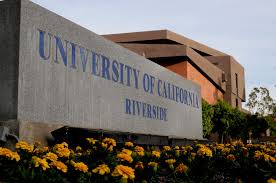
The University of California, Riverside is also participating in the Visiting Scholars pilot
For Wikipedia, access to high quality published sources enhances the encyclopedia’s mission, improves its reliability, and improves the impact of vital tertiary scholarship.
Libraries working with Wikipedia not only help by adding high quality content references, but they can bring readers back into the library to explore its collections and sources, increasing usage of library’s materials. Librarians will be able to more effectively leverage the scholarship they do now in creating LibGuides and other lists and bibliographies by working with the visiting editor to ensure important, core resources are appropriately represented in Wikipedia.
Wikipedia Visiting Scholars will note the number of articles they enhance with access to library resources, and the number of new citations they are able to correct or add, with help of the library collections, providing metrics that libraries can use to measure their impact for internal and external stakeholders. Meanwhile, partnerships will be promoted within the Wikipedia community and shared with the library’s departments and with the media, raising the library’s profile. The pilot program will allow libraries to explore possible impacts on library usage and patron attitudes towards the library.
The Wikipedia Library will promote, organize, and manage a broad and open application process for Visiting Scholars, with minimum standards for experience, activity, and good conduct. A list of qualified applicants will be presented to partnering universities or institutions, and a candidate selection process will be collaboratively handled with Wikipedia Library volunteers.
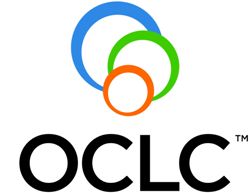
OCLC is one of the latest library organizations to partner with the project
OCLC’S KB API: FULL TEXT WITH A SINGLE CLICK
Visiting Scholars is far from the only new initiative in which Wikipedia Library is partnering with traditional library resources. OCLC is developing a fulfillment service based on the WorldCat KnowledgeBase API. Libraries eligible to participate will be able to remotely connect a library user on a third party site, like Wikipedia, to a full text source just by affiliating the user’s IP address with a library’s proxy resolver, once a match on the article citation is made.
KEY PLAYERS
- Jake Orlowitz (Ocaasi) – Wikimedia Foundation Grantee, Lead Coordinator of The Wikipedia Library
- Patrick Earley (The Interior) – Librarian with the Vancouver, British Columbia public system, Community Liaison with the Wikimedia Foundation, Head Librarian of The Wikipedia Library
- Cindy Altick Cunningham - OCLC Business Development
- Merrilee Proffitt - Digital Librarian and OCLC Research Associate
- Amanda French - Digital Humanities professor at George Mason University’s Roy Rosenzweig Center for History and New Media, THATCamp coordinator
- Max Klein, Wikipedian-in-Residence at OCLC
- Phoebe Ayers - Wikimedia Foundation Board Member, UC Davis Librarian
- Bruce Washburn - OCLC Technical Engineer
- Roy Tennant - OCLC Technical Engineer
- Nischay Nahata - Wikipedia volunteer code developer
- Siko Bouterse - Head of Wikimedia Foundation Individual Engagement Grants
OCLC published the API in fall 2013 to connect Wikipedia editors to electronic full text available online through affiliated libraries. This fulfillment service sends a query via the API to OCLC, which processes the query, affiliates the editor with a library, and checks WorldCat to see if the requested citation is available within the library’s collection. If there is a match, the API returns a link to Wikipedia that either connects directly to the requested full text or to the library’s OpenURL resolver.
Simply put, OCLC can deliver full text sources directly to editors if their IP address alone would give them access to the source. For open access full-text sources, these can be displayed for anyone who finds them on the Web.
OCLC and Wikipedia aim to maximize the scenario wherein a Wikipedia editor is shown a link to a full text source only when that source is available without any extra authentication. To the extent that OCLC can provide direct full text access where it was otherwise unavailable (or only with difficulty), this collaboration becomes far more useful to all users of Wikipedia.
Libraries are eligible to participate in this KnowledgeBase pilot if the library is a full OCLC cataloging member and if it subscribes to FirstSearch, OCLC’s Discovery offering. If the library does those two things, it can register its e-collections in the OCLC Knowledge Base. Libraries who use ProQuest’s services (formerly known as Serials Solutions) will soon be able to have their holdings shared with OCLC as a result of a recently signed agreement between the two organizations. Once a library’s e-collections are registered in the KB, those collections can be shown to users via syndication provided by the KB API. Every library, whether an OCLC member or not, has the chance to be syndicated by registering with the Spotlight program and telling OCLC about its open URL gateway resolvers, which can also be used to drive users to a library’s door from another website.
OTHER LIBRARY/WIKIPEDIA PROJECTS
- Forward to libraries navigation box designed by UPenn librarian John Mark Ockerbloom.
- VIAFbot and the Integration of Library Data on Wikipedia
- GLAM Wiki
- Wikipedia Loves Libraries
- Wikipedia 101
The OCLC KnowledgeBase API should be able to tell libraries how many times their articles are being accessed.
In order to have article references showing links to full text, a reader will have to quickly install a small script into their account when using Wikipedia. Libraries will ideally want to tell their community about the script and how to use it, so that all of its resources are discoverable via Wikipedia.
Both of the Visiting Scholar pilot sites will have Wikipedia Library’s support to try out the full text reference tool as well.
To address privacy concerns, OCLC has agreed to build in whatever privacy protections Wikipedia desires to insure that any sharing of editors’ information with a third party such as a library or university would be fully disclosed and opt-in only. OCLC has also offered to provide these services informally, non-exclusively, free of charge, and without any branding whatsoever. What that might look like is a link on some Wikipedia page that says, “Find a library” or “Full text source”. OCLC is not asking to be mentioned on Wikipedia articles. After OCLC demonstrates its services, further integration into Wikipedia will require community discussion and consensus among the volunteer editors.
FUTURE FOCUS
Beyond seeking to expand donations of accounts by individual publishers and the Wikipedia Visiting Scholars Program, the Wikipedia Library is exploring more ambitious ways to connect Wikipedia and libraries. These include:
- joining with whole universities to connect The Wikipedia Library with their library resources;
- integrating with catalogs, databases, archives, and journals;
- involving reference librarians in answering queries from Wikipedia editors;
- providing ways for end users to contact librarians from within Wikipedia;
- combining WikiProject Resource Exchange with the OA button browser extension to create a platform where a person not able to access a source is immediately connected with someone who has the source and is willing to share it under fair use; building better open source tools for citation management that are integrated on Wikipedia;
- encouraging libraries to host editathons and teaching session about Wikipedia and digital literacy;
- using graphics to signal when sources are freely accessible;
- providing a hub for finding aids and research guides and enable them to be freely licensed and for creators to collaborate on them; and
- synthesizing metadata with Wikipedia articles.
About Jake Orlowitz and Patrick Earley
Jake Orlowitz is a Wikimedia Foundation Grantee and Lead Coordinator of The Wikipedia Library. Patrick Earley is a Librarian with the Vancouver, British Columbia public system, Community Liaison with the Wikimedia Foundation, and Head Librarian of The Wikipedia Library.
Jake Orlowitz is a Wikimedia Foundation Grantee and Lead Coordinator of The Wikipedia Library. Patrick Earley is a Librarian with the Vancouver, British Columbia public system, Community Liaison with the Wikimedia Foundation, and Head Librarian of The Wikipedia Library.


































